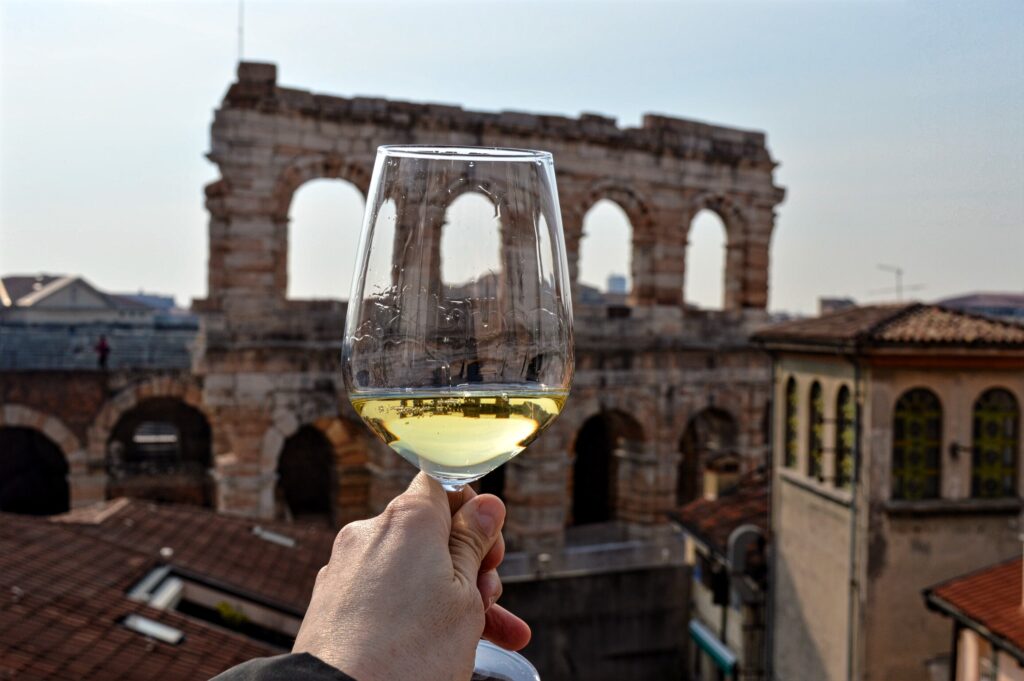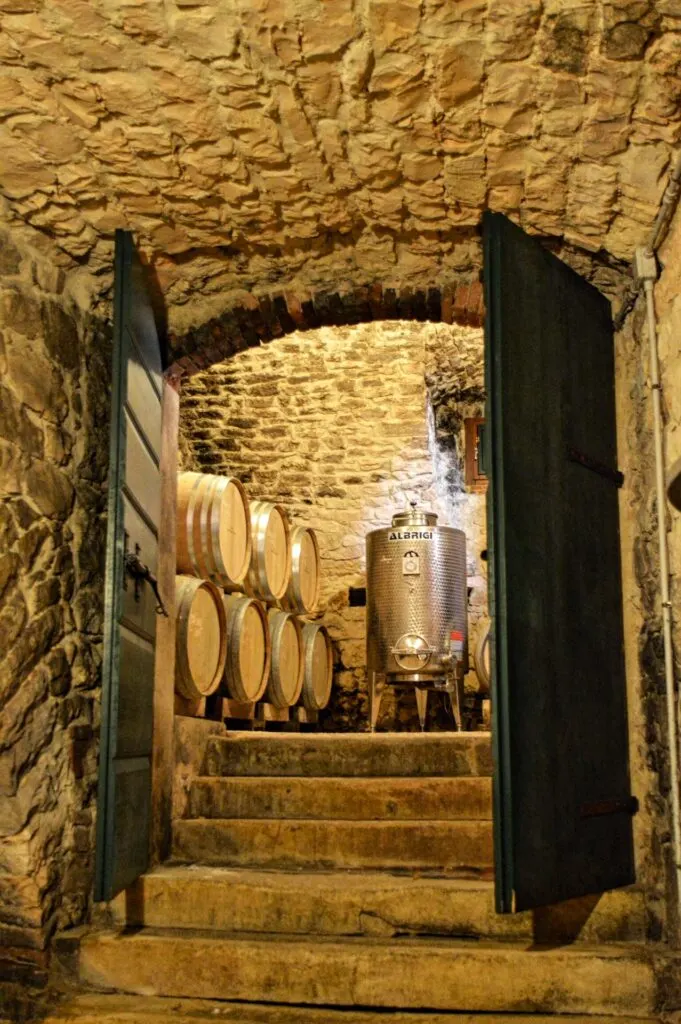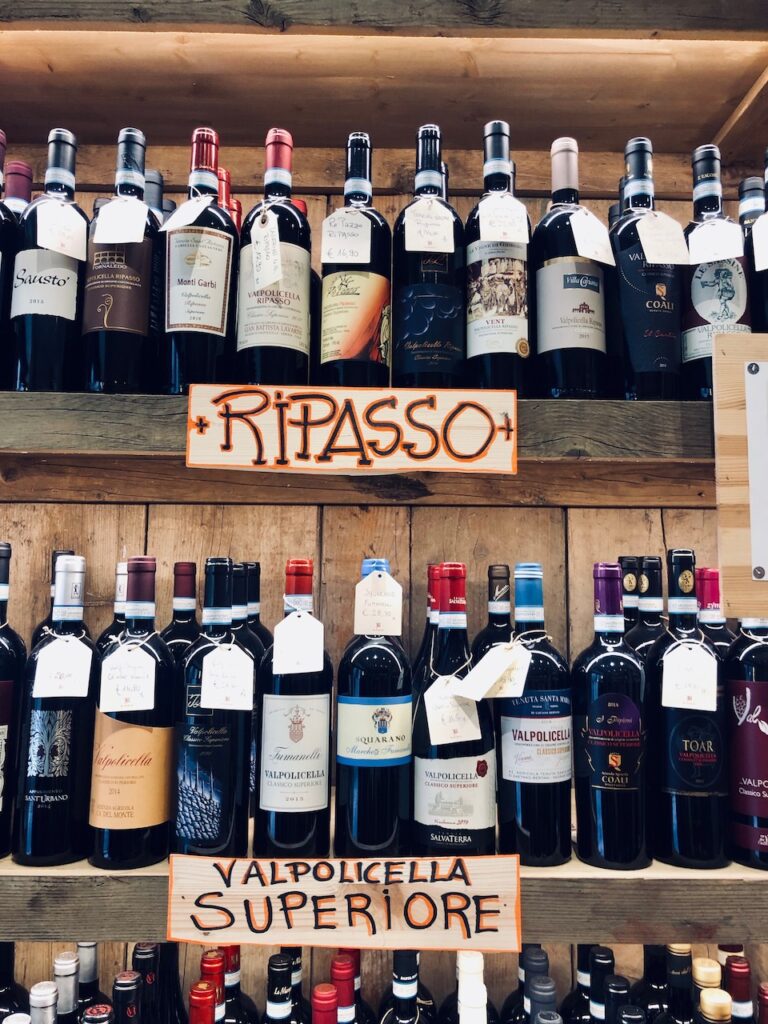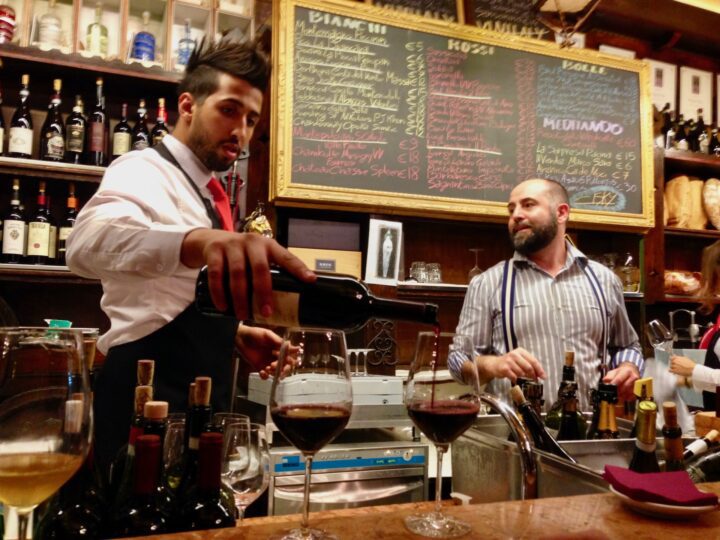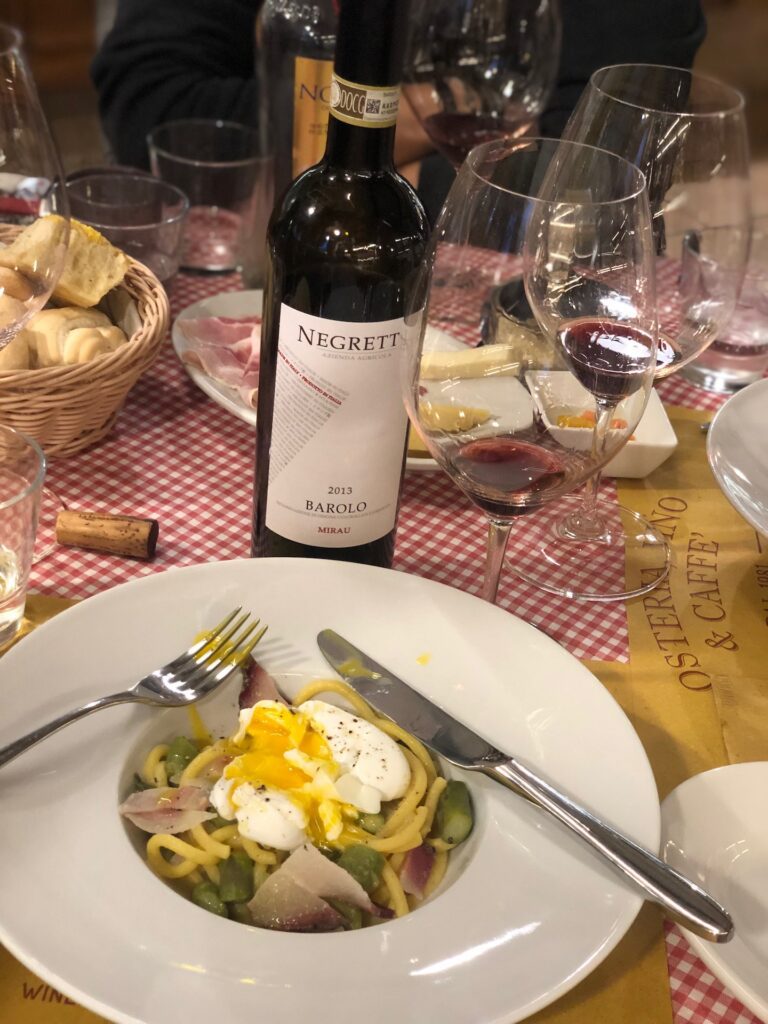A guide to drinking, eating and doing Valpolicella right.
Places like Tuscany, Piedmont, and Sicily always top a wine lover bucket list, but don’t miss the Valpolicella. And if sales growth during the pandemic tells us anything, it’s that y’all have a renewed interest in the great wines of Italy’s Northeast.
According to the Consorzio della Valpolcella, the region’s wine sales grew by 16 percent from 2020 to 2021. So for our next Italian wine region, we’re giving you what you want – Ripasso, Amarone, and fair Verona.
GETTING TO THE Valpolicella WINE REGION?
Spanning 93 miles / 240-square kilometers in the foothills of the Alp, this northern Italian wine region borders the Lessini Mountains to the north and the Adige River to the south. It is easily accessible via Milan or Verona. Reach the vineyard area from the Milan Malpensa Airport, about a 2.25-hour drive or head into Verona by train. Verona is accessible by flight or its well-connected train station. The vineyard area is about 30 minutes by car northwest of Verona.
BEST TIME TO VISIT THE Valpolicella WINE REGION?
Harvest is a mixed bag for visiting Italy’s wine country. It’s amazing to see the magic happen, but harder for the wineries to organize visits. Larger producers typically have dedicated staff for hospitality, so that’s quite doable. But for smaller wineries it can be more difficult to manage. So consider that to plan timing. For temperature, the hottest month is July when temps reach between about 88F / 32C; though it is the least humid and driest month, so that’s also worth consideration. Springtime is always a great time with moderate temps and the blooming countryside, but it is the most humid time of the year. Staying in the Valpolicella’s nearby bigger city of Verona also has some considerations because it is a popular location for international events. As such lodging may appear irregular for availability and prices. Consider the following events.
Vinitaly, April: During Vinitaly a large majority of the Italian wine trade and international visitors taking over the area. It’s quite the production. They do offer some consumer days, but note that it’s not always easy to get to know producers as they are busy with trade meetings.
Marmomac International Marble Fair, September: Verona isn’t only the city of Romeo and Juliet. It is also the city of marble. The Verona marble, called Marmo Rosso di Verona, has been used since Roman times. Its revered for its elegance and quality; still a favorite for buildings today. The biggest global event for the natural stone industry takes place in Verona.
The Opera Festival, June to September: The Opera Festival is consistently popular time with area visitors. Note that when more internationally known stars perform, crowds increase dramatically in size and vary in age.
During busy event times, expect a more crowded city center, full restaurants, and premium hotel rates. If you plan to stay in Verona while you visit the Valpolicella wine region during these dates, book early.
HISTORY
With a history that dates back to the ancient Greeks, the region’s name is deep rooted in its viticultural history. The name Valpolicella, believed to be a mix of Latin and ancient Greek, means “valley of the cellars”.
The area’s vines and wine are credited with bringing cultural progress to the area from the 14th century onwards. During this time, the valley saw the construction of villas to facilitate meetings of scholars, poets, and “learned men”. During this time, the area became known as the ”Valley of the Poets”. The noble houses remain in use today as cultural centers, wineries, accommodations, and private homes.
Fast forward to 1968 to the modern classification shift with the Valpolicella DOC designation. Implementation of the DOC included production regulations and the delineation of the production zones that remain in use today.
Back then, the discipline recognized two wines: Valpolicella and Recioto della Valpolicella. The area’s famed Amarone wine was already being produced, footnoted as a ‘dry’ style of Recioto.
TOP GRAPE VARIETIES IN VALPOLICELLA
Valpolicella wines are primarily varietal blends with the local Corvina grape reigning supreme followed by Rondinella, and Molinara.
Corvina: Structure, aroma, and softness.
Rondinella: A hearty variety that stands up to disease and adverse weather; adds color and zest.
Molinara: Adds freshness.
TERROIR
Valpolicella is the largest and most prestigious production area in the larger Veneto wine region. Its viticultural area connects the Soave and Bardolino wine regions, also part of the Veneto.
The Valpolicella hills reach more than 1300 feet above sea level, soaring back down to valley floors and climbing again all across the region. The area’s abundance of microclimates and grape-friendly soils make it a wonderland for wine growers.
With a rich range of soils including calcareous, limestone- and clay-rich soils to paltry soils left from ancient volcanic activities to alluvial material, the area is fertile land for an infinite number of varieties.
The diversity of the region’s acclaimed red wines offer something for every palate with four distinct styles.
Valpolicella DOC: Young and vibrant, these wines show a delicate bouquet and a fresh, smooth palate. The next level up is the Valpolicella DOC Superiore made using select grapes from top locations with one year aging before release. Some grapes undergo a short drying period for higher alcohol and a richer structure. Drink young – typically within the first five years of release.
Ripasso: Often referred to as a baby Amarone, Ripasso (repassed) wines are made by refermenting young Valpolicella wines on unpressed Amarone skins. One of the most in-demand wines coming out of the region because of its Amarone-like depth but Valpolicella-like drinkability, it saw a 15 percent sales growth from 2020 to 2021. The wine itself is medium bodied with a complex structure showing balsamic and red fruit notes. Also intended for youthful consumption, typically in the first five years.
Amarone: Easily the star of the Valpolicella, Amarone also enjoyed huge sales growth from 2020 to 2021 at a 24 percent increase. The wine’s captivating palate comes from drying the grapes for 100 to 120 days after harvest, which increases both sugar content and tannic structure. According to the Valpolicella Conzorzio, the dried grapes vinify in the winter, then after a slow fermentation, dry wine, yielding its high alcohol content. Extended wood lends its unique structure and personality, making it ageworthy for decades. The flavor profile includes balsamic notes, dried fruits, spices, cocoa, and tobacco. Wines for extended aging.
Recioto: A sweet wine that also comes from dried grapes, it is produced like Amarone. With Recioto, fermentation stops before sugars convert to alcohol keeping it sweet while Amarone wines fully ferment producing a dry wine. Recioto wines show sweet dried fruit and great acidity.
WHERE TO SIP IN VALPOLICELLA
A tasting experience for the senses awaits at Tenuta Ugolini in the famed winemaking area of Fumane. Start the visit with a walk to the vineyards followed by a cellar tour, and then a tasting experience based on your unique interests – from introduction to area wines to personalized tasting of estate wines to experiential tastings featuring wines from the family’s private collection. Experiences are led by sommeliers giving you an intimate MasterClass among the vines.
Enjoy a full day immersion into the area’s Amarone wines with a Romeo & Juliet Guide. They offer standard educational programs and more involved specialty experiences including vintage exploration, cru study, and more. Tours include door-to-door professional driver service plus sommelier-level guide. Tour options also include exploration of the main wines of the area like Valpolicella DOC, Ripasso, and Recioto.
In Verona, don’t miss a visit to the famed Antica Bottega del Vino, which dates back to the 16th century Venetian Republic period when it was known as the Osteria Shield of France. In 2010, the Bottega was purchased by Le Famiglie Storiche, an association of 10 local historic wineries. The group aimed to preserve the Bottega’s heritage, celebrating the place where great poets, painters, artists, once communed, exchanging and debating over area wines.
PLANNING YOUR TRIP TO VALPOLICELLA
WHERE TO STAY
Directly in the historic center with a truly epic view of the Arena, Hotel Milano & Spa is an excellent Verona lodging choice. The hotel is just behind the Arena on a quiet street and about a 5-minute walk to ancient Roman forum of Piazza della Erbe. The modern rooms include wifi, flat-screen TVs, minibar, and rainfall showers. Terrace, city views, and living room space with some rooms or suites.
If five-star luxury is your jam, the stately Due Torri Hotel gives you historical elegance on a grand scale. Also located in Verona’s historic center, the building itself dates back to the 1300s with period furnishings and original frescoes throughout. Rooms feature modern conveniences such as wifi and flat screen TVs, but retain the historic charms with authentic Biedermier or empire style furnishings.
Just outside of the historic center and easy access to the train station, Relais Empire is a lovely property with beautiful period furnishings and parking. The location is just minutes by few from the Arena and about 15 minutes the other direction to the railway station.
WINE TASTING TOURS
It’s highly recommended that you hire a driver who can not only schedule your wine tastings in advance, but get you there and act as a translator. Romeo & Juliet Guide is a great local option.
BEYOND THE VINES
Don’t miss Fair Verona. An under-the-radar historical and cultural powerhouse of Italy, the city is the third largest in northeast Italy, sitting along the Adige River.
The vibrant city boasts endless cultural experiences, from its deep history spanning centuries to easy day trips including the Valpolicella wine region, Lake Garda, Venice, Milan, Bologna, Modena, and more.
One of the best starting points in Verona is a food and wine walking tour by two charming Veroneses: Sara and Virginia of Romeo and Juliet Guide. Explore the city by foot, learning about the medieval and Renaissance history and architecture with frequent stops to sample meats, cheeses, wine, pasta, and more.
Take in the famed Opera Festival, a popular attraction in Verona. Opera is performed outside in the historic Arena; the festival runs from late June to early September.
Sip in More of Italy
- Why visit Sicily? History + Wine + Food Need we say more?

- A Guide to the Liguria Wine Region in Northern Italy
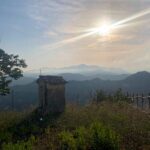
- Wines of Campania and the Amalfi Coast
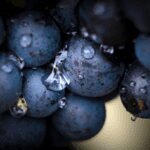
- The Perfect Amalfi Coast Itinerary for Wine Lovers
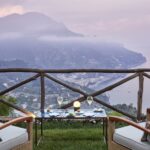
Valerie Quintanilla
Valerie and her son Il Ragazzino reside in Barolo, Piedmont, Italy, by way of Denver, Colo. She runs a custom Italy travel planning business while moonlighting as a marketing consultant for European wine and travel companies. She has been featured in Wine Enthusiast, Food & Wine Magazine, Open Skies (Emirate Airlines inflight magazine), and more. Follow her expat and wine chronicles here https://linktr.ee/valeriekq.

